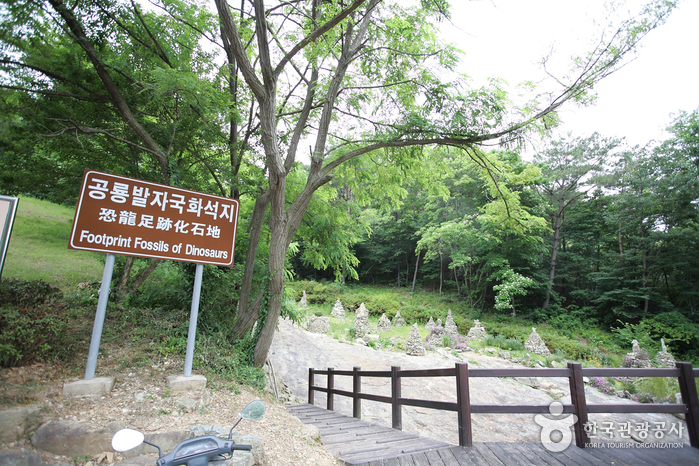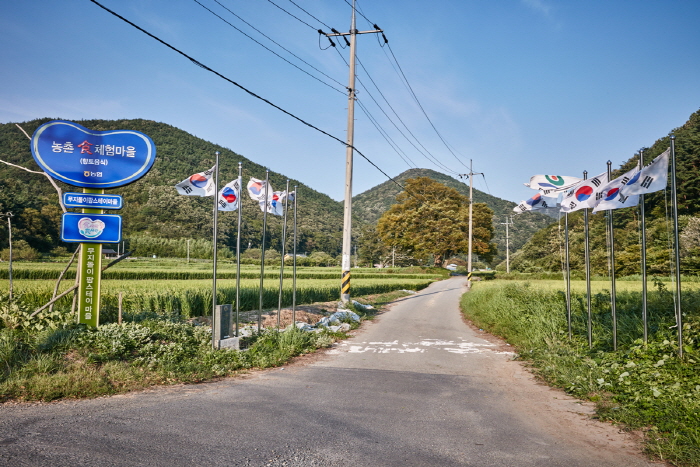Jinju Bullfighting Arena (진주소싸움경기장)
8.8 Km 29073 2024-02-28
100 Panmunodong-gil, Jinju-si, Gyeongsangnam-do
Jinju Traditional Bullfighting Arena was established with the aim of preserving and fostering Jinju's traditional folk culture of bullfighting. With a seating capacity of 3,000, the arena is strategically situated in proximity to the expansive Jinyangho Park, seamlessly blending with its picturesque scenery. This venue annually hosts national competitions and holds regular Saturday bullfighting matches, providing visitors with a unique and captivating spectacle.
KAI Aerospace Museum (사천 항공우주박물관)
13.7 Km 6040 2024-02-23
78 Gongdan 1-ro, Sanam-myeon, Sacheon-si, Gyeongsangnam-do
KAI Aerospace Museum is dedicated to the preservation and exhibition of materials related to Korea's aerospace science. Its establishment aims to cultivate a proper historical perspective on national security while showcasing the technology and vision of the cutting-edge aerospace industry. Key facilities within the museum include the Freedom Hall, Aerospace Hall, Aviation Industry Hall, and an Outdoor Exhibition Hall. These exhibits not only provide valuable insights into the history of the aviation industry but also offer a glimpse into the future of the space industry.
Gyeongsangnam-do Arboretum (경상남도 수목원)
14.0 Km 143363 2024-02-28
386 Sumogwon-ro, Ibanseong-myeon, Jinju-si, Gyeongsangnam-do
Gyeongsangnam-do Arboretum is a botanical garden in Daecheon-ri, Jinju. Spanning an area of 117 hectares, the arboretum includes Special Arboretum, Botanic Garden, and Tropical Botanical Garden, primarily focusing on the flora of Korea's southern region. It preserves and showcases over 3,000 species of domestic and international plants. Complementing these features are a range of essential facilities, including a Theme Center, Experience Center, Ecological Forest, Wildlife Center, and more.
Yeonhwasan Provincial Park (연화산도립공원)
15.0 Km 11150 2022-08-03
544, Yeonhwasan 1-ro, Goseong-gun, Gyeongsangnam-do
+82-55-673-4101
Yeonhwasan Mountain, located in Goseong, Gyeongsangnam-do, is just 524 meters tall, encompasses the three peaks of Ongnyeobong, Seondobong and Mangseonbong, and is widely recognized as an important provincial park. Its northern side is dotted with Buddhist temples such as the historical Okcheonsa Temple, Baengnyeonam Hermitage, Cheongyeonam Hermitage and Yeondaeam Hermitage. Although Yeonhwasan Mountain is called a "mountain," the gentle slopes and ridges are more similar to those of a hill. Unlike other mountains where the purpose lies in trekking and climbing to the mountain summit, the most fruitful experience one can get from exploring Yeonhwasan Mountain is a visit to Okcheonsa Temple. From the summit of the mountain, visitors will be able to see Okcheonsa Temple nestled in the mountain and the deep blue sea along Danghangpo Resort to the mountain's south.
Okcheonsa Temple (옥천사)
15.5 Km 24447 2020-01-29
471-9, Yeonhwasan 1-ro, Gaecheon-myeon, Goseong-gun, Gyeongsangnam-do
+82-55-672-0100
Okcheonsa Temple was built in the 16th year of King Munmu's reign (676) during the Silla dynasty. The name “Okcheon,” which means "jade spring," was derived from the mineral spring located next to the main hall.
The temple holds several valuable cultural assets, such as the state-designated heritage Bronze Gong of Okcheonsa (Treasure No. 495) and 119 city/province-designated heritage properties, including Jabangnu Pavilion, Hyangno (incense burner), Daeungjeon Hall, and Daejong (bell). The linden tree at the Cheongnyeonam was designated as Monument No. 82 for its great academic value.
There are other small temples nearby, such as Baengnyeonam, Cheongyeonam, and Yeondaeam. Those interested in learning more about Buddhism can drop by Yeonhwasan Provincial Park’s Bojanggak Hall, an exhibition hall built to preserve about 120 pieces of Buddhist artifacts.
Parkjinsagoga [Korea Quality] / 박진사고가 [한국관광 품질인증]
16.1 Km 996 2024-02-01
25-12, Cheonggwang 6-gil, Goseong-gun, Gyeongsangnam-do
+82-10-8854-2141
Parkjinsa Gotaek in Cheonggwang-ri,Goseong is an old house of Miryang Park Clan which is #292 Cultural Material. The traditional Korean style house shows the construction method of houses during the late Joseon Dynasty. Three generations of Sungkyunkwan officials were born in this house in a span of 100 years. There is a red gate of award of the king erected at the entrance of the house to cite the devoted son. Usually the red gate of award of the king was erected at the entrance of the village to cite the devoted son, a chaste woman, or a loyal subject, and the Parkjinsa Gotaek is a rare case for which the red gate of award of the king was erected at the entrance of the house.
The old wall of the house, which looks like a fossil bed, demonstrates the long history of the house. The well-tended garden near the gate will make you stop walking because it looks like something straight out of a movie scene. The scenery over the window from any place inside the house is as pretty as a picture. The rooms in the house are composed of 2 Anchae (inner buildings) and 4 Sarangchae (outer buildings). Both Anchae and Sarangchae are equipped with restroom and shower room. The kitchen is only in the Anchae building. Sarangchae can be used as one wide room to accommodate a maximum 10 people; it’s done by simply opening the doors dividing the small rooms. The house is used for paid educational programs of traditional tea ceremony and etiquette. The old warehouse has been remolded to be a classroom for tea ceremony classes. The place is also used as a place for events; it’s equipped with a beam projector and sound equipment for hosting seminars, workshops, etc. There is a tea ceremony room made by remodeling a building attached to Sarangchae where you can learn the wisdom of ancestors over a warm tea.
Suamsa Temple (수암사)
16.3 Km 0 2024-02-28
267 Suam-ro, Uiryeong-eup, Uiryeong-gun, Gyeongsangnam-do
Suamsa Temple is located on the slopes of Byeokhwasan Mountain in Uiryeong. The approach is a remarkable 650-meter path leading to the Cheonwangmun Gate, flanked by 333 outdoor statues of Avalokitesvara Bodhisattva crafted from jade stone — the largest collection of its kind in Asia. Beyond the Cheonwangmun Gate, the temple grounds unfold, revealing a series of halls. These include the Daejeokgwangjeon Hall with its Gilt-Bronze Ten-Thousand Buddhas, as well as the Geungnakjeon Hall, Gwaneumjeon Hall, and Buddhist Bell Pavilion.
Mujidori Village (Muju Farm Village) (무지돌이마을)
16.9 Km 45639 2020-01-04
81-9, Naseon-gil, Gaecheon-myeon, Goseong-gun, Gyeongsangnam-do
Having a 500-year-old history, Mujidori Village is a traditional village with a small stream by the entrance, seven mountain peaks, and three reservoirs. The village has 155 hectares of farm land, making it the largest of its kind in Goseong-gun.
The village only uses organic farming methods to grow their crops which include turmeric, luffa, chestnuts, beans, buckwheat, etc. Shade trees and rest areas can be found near the reservoirs and by the stream. The village also offers a rural experience through their farm-stay programs, folk games, and other hands-on activities.
Located nearby is Danghangpo Resort, the famous battlefield where Admiral Yi Sun-sin crushed the Japanese navy during the Imjin War (1592–1598). The resort complex includes a family recreational park, a camping site, an amusement park and a leisure-sports facility. The Goseong Dinosaur Museum, which was built next to one of the world’s largest dinosaur footprint fossil sites, is also worth a visit.


![Parkjinsagoga [Korea Quality] / 박진사고가 [한국관광 품질인증]](http://tong.visitkorea.or.kr/cms/resource/79/2631679_image2_1.jpg)

 English
English
 한국어
한국어 日本語
日本語 中文(简体)
中文(简体) Deutsch
Deutsch Français
Français Español
Español Русский
Русский